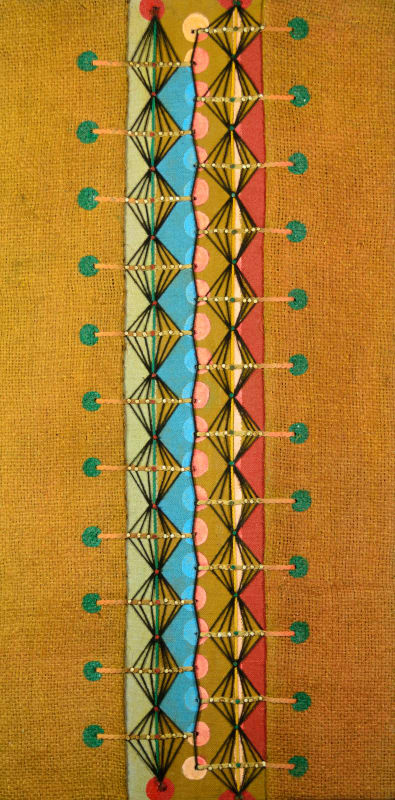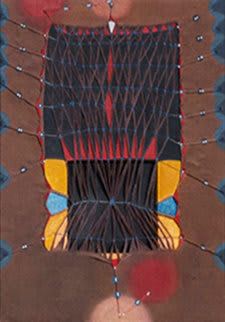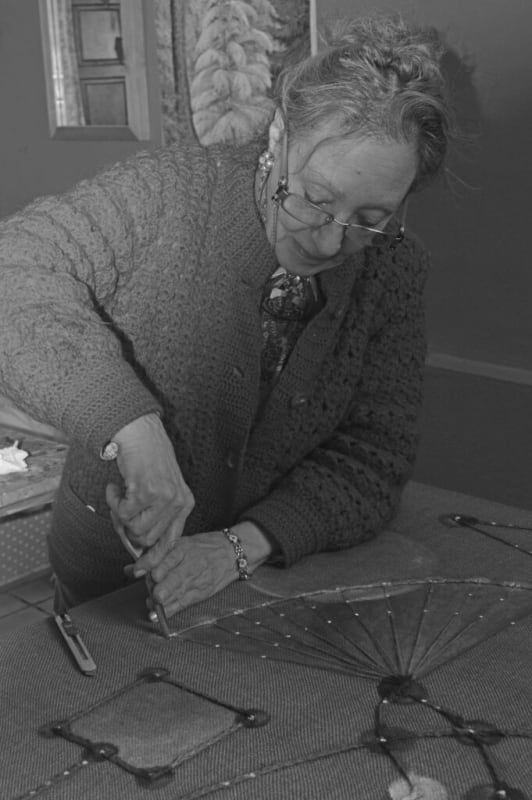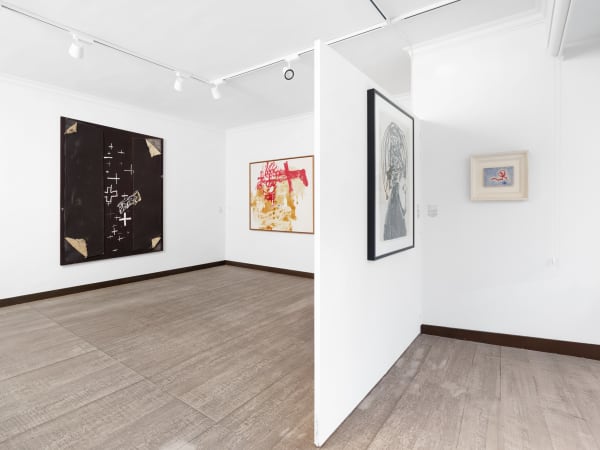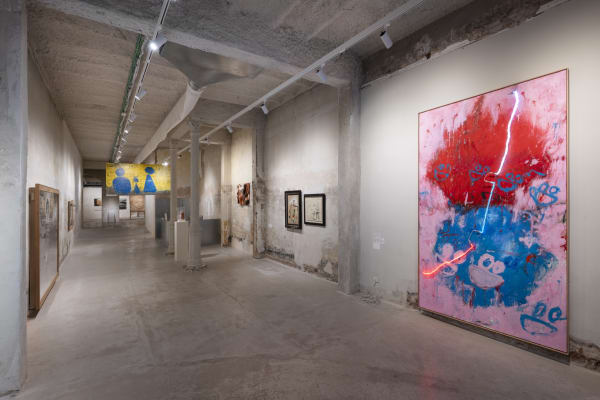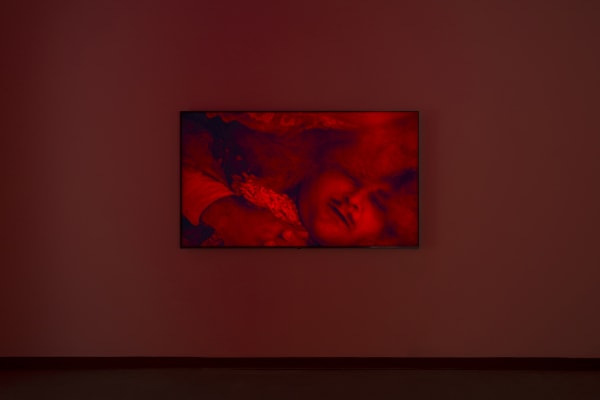Magda Bolumar Spanish, b. 1936
"Magda Bolumar has created something simpler and purer than anyone had ever done before: letting the fabric speak"
Alexandre Cirici (1970)
Magda Bolumar Chertró is a renowned Catalan visual artist associated with the avant-garde movements of the mid-20th century. She is celebrated for her innovative use of materials and her significant contributions to the development of contemporary art in Spain.
Bolumar’s artistic journey began in 1948, when she entered the studio of painter Rafael Estrany, a disciple of the Belgian artist James Ensor. She later continued her education at the School of Arts and Crafts in Mataró. In 1954, Bolumar made contact with key members of the Dau al Set group, a prominent Catalan avant-garde collective, and also met sculptor Moisés Villelia, a key figure in the Art Actual group. In 1958, Bolumar married Villelia, and together, they embarked on a collaborative exploration of primary materials in art, further enriching the intellectual and artistic landscape of their time.
Throughout her career, Bolumar has consistently pushed the boundaries of art, exploring new techniques and materials. In the 1960s, she gained particular recognition for her "Xarpelleres," innovative creations made from sackcloth that evoke a strong, personal, and poetic connection with nature. These works emphasize the material itself, showcasing Bolumar’s ability to highlight the intrinsic qualities of the fabric—strength, flexibility, and malleability—and use them to create a new cosmic vision rooted in the primal forces of creation.
In parallel to her work with the "Xarpelleres," Bolumar began creating intricate drawings, which she first presented to the public in a gallery exhibition. These works, like her fabric pieces, involved detailed preparatory work and once again centered on the material itself. Bolumar's innovative approach to drawing and her exploration of new techniques established her as a pioneering figure in the artistic world, continuously challenging the norms of the time.
Bolumar also collaborated with the magazine Inquietud Artística, where several of her works were published, helping to spread her artistic vision. Her work has been recognized not only for its technical innovation but also for its ability to evoke a deep emotional and philosophical connection to the natural world and the forces that shape creation.
As a female artist in the Francoist era, Bolumar's success and recognition set her apart from many of her contemporaries. Her ability to navigate and thrive in a male-dominated artistic world, while maintaining a strong and distinctive voice, has cemented her place as one of the most important figures in Catalan art.
-

Résistance et renaissance : l'art espagnol d'après-guerre
Paris 20 Oct - 20 Dec 2025At a time when history seems suspended and collective memory kidnapped by official silence, post-war Spanish art is offered not as a witness, but as a practice of material resistance...Read more -

Magda Bolumar. Constellations
Paris 27 Feb - 19 Apr 2025From the late 1950s on, Bolumar developed a unique artistic language and began exploring the limits of painting as a medium, approaching her canvases as material objects. In this way...Read more -

RADICALLY UNIQUE, RADICALLY DIFFERENT
Barcelona 21 Nov 2024 - 15 Feb 2025If we champion difference rather than homogeneity, the 20th century appears to be a sequence of irreconcilable personalities. So unique that nothing links them. We could say that the systematic...Read more
-

Magda Bolumar. Constellations, a text by Elise Lammer
Matter and Spirit: Magda Bolumar Through the Eyes of Elise Lammer March 28, 2025French version Mayoral is proud to present the first solo exhibition in Paris of Catalan artist Magda Bolumar Chertró (born in 1936 in Caldes d’Estrac,...Read more -

Radically unique, radically different
Carles Guerra presents a great show that mixes the 20th and 21st centuries, with the occasion of the 35th anniversary of the Galeria Mayoral November 18, 2024Catalan version Spanish version Galeria Mayoral is celebrating 35 years devoted to modern and contemporary art. The brilliant artists from the most iconic avant-garde share...Read more

